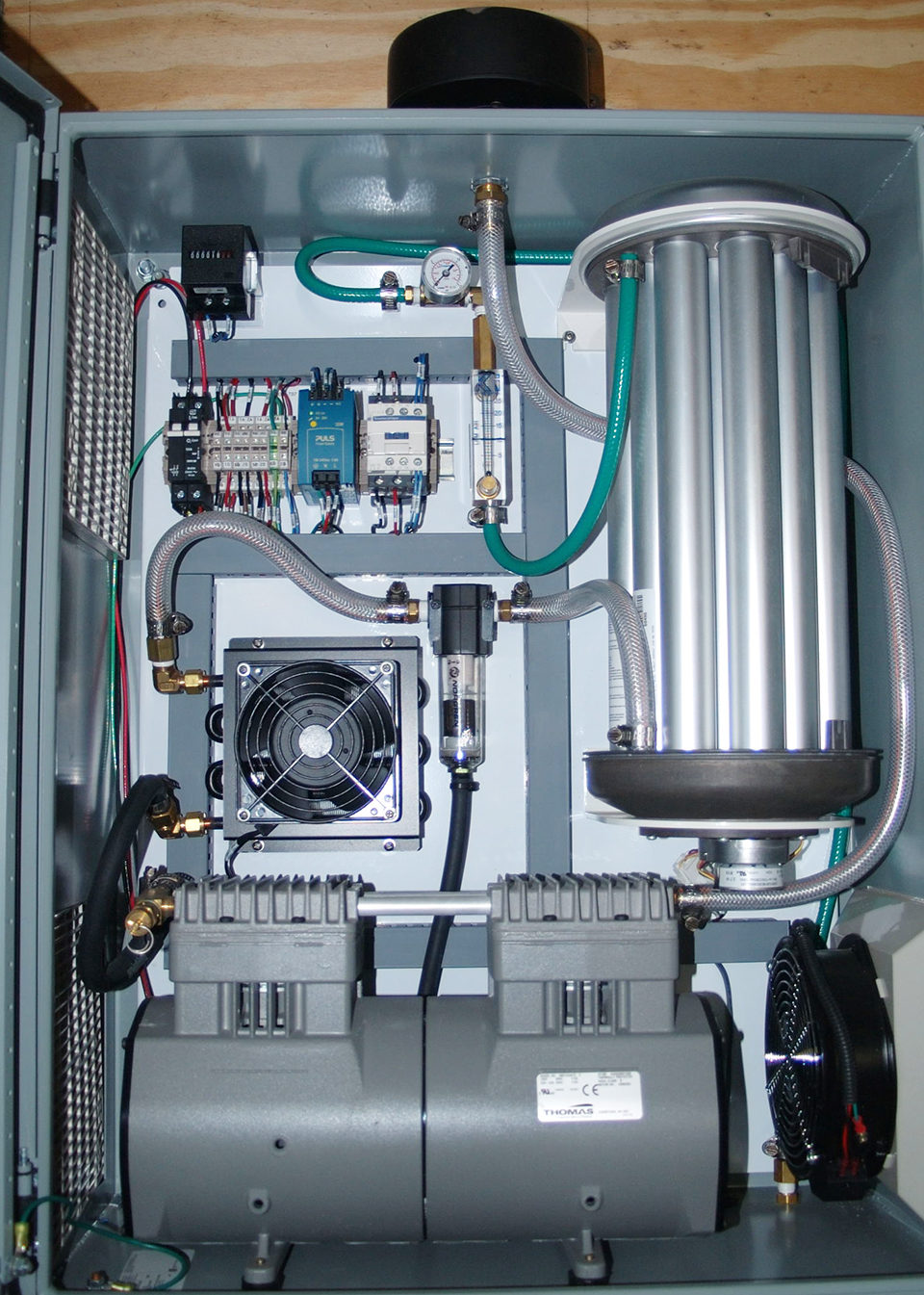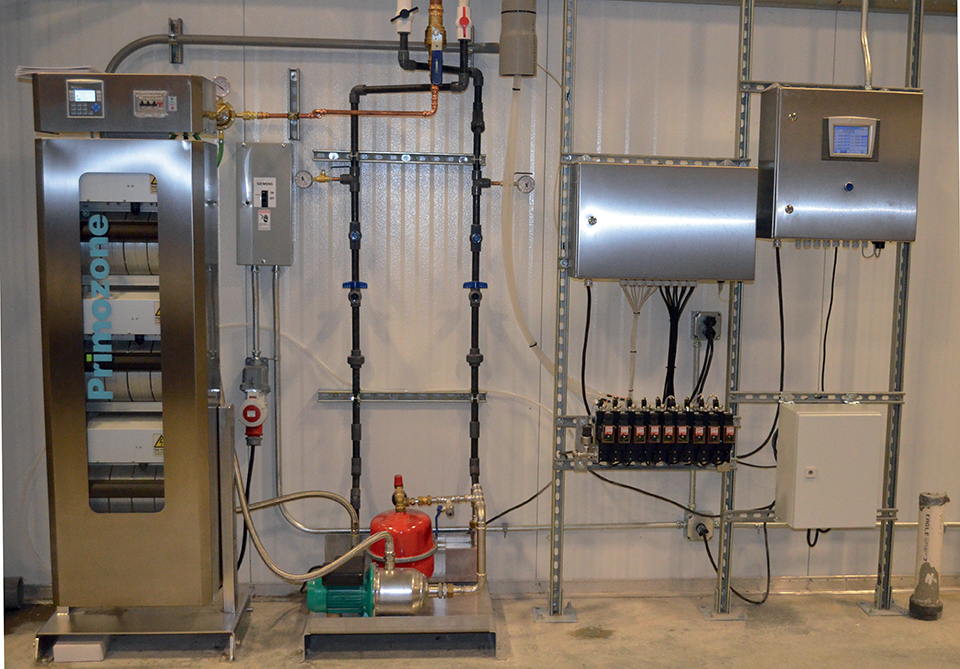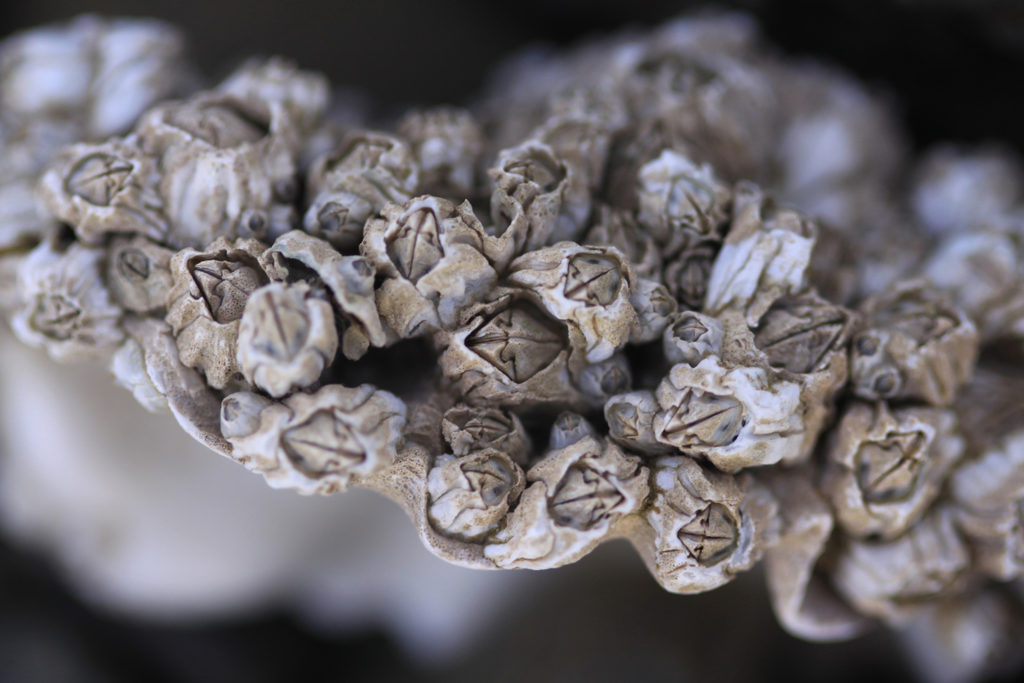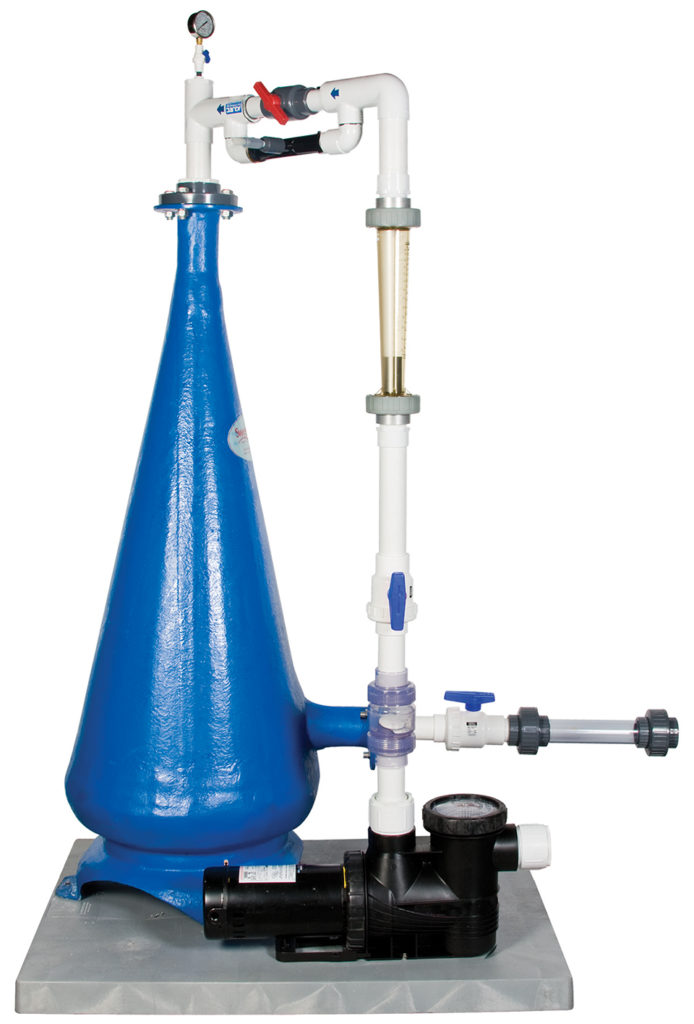Used to oxidize organic substances and inorganic substances like iron, manganese, sulfide and nitrite

Ozone is a strong oxidizing agent capable of rapidly treating many inorganic and organic substances. It is widely used in water purification, disinfection and bleaching processes.
Despite concerns regarding the complexity of the ozonation process, ozone systems are becoming increasingly important in recirculating aquatic systems. In fact, some aquariums rely on ozone to control contaminants, particularly for exhibits of large mammals. Aquaculturists are also taking a closer look at ozone application for disinfection and water treatment in recirculating systems.
Ozone applications
Ozone is used to oxidize organic substances and inorganic substances like iron, manganese, sulfide and nitrite. It can also treat color issues related to humic, fulvic and tannic acids; off tastes and odors; total organic carbon and biochemical oxygen demand/chemical oxygen demand. Other applications include microflocculation or particle removal and disinfection of coliforms, viruses, algae and other microorganisms.
Ozone, the triatomic form of oxygen, is produced from air or oxygen gas using an electric discharge. The photochemical process requires ultraviolet (U.V.) light at a wavelength of 185 nm. U.V. ozone generators in general produce only about 1-2 percent ozone by weight.
Corona discharge ozone generators produce ozone when dry air or oxygen gas is passed by an electrical field or “corona.” These systems are capable of producing ozone concentrations up to about 8 percent by weight, depending on conditions and whether air or oxygen is used.
Ozone has many benefits over other methods of chemical treatment. It is easily produced on site from air or oxygen gas by electric discharge, and is an extremely reactive gas that oxidizes many substances. Ozone has a short half-life of 20 to 30 minutes when dissolved in water and safely breaks down to molecular oxygen with no residue.
However, there are some concerns with use of ozone. Some of these include capital costs and engineering concerns. In addition, ozone is a dangerous gas with toxicity risks for humans, aquatic animals and biofilter organisms.
There are limitations on the kinds of materials that are compatible with ozone. Stainless steel, glass, plexiglass, Teflon, Kynar, chlorinated polyvinyl chloride and Viton are typically used.
System components
A complete ozone system can include several components, such as an air dryer, air compressor, oxygen generator (optional), ozone generators, ozone dosing controller, ozone mixing and contact units, ozone injection system and ozone destruction system. Commercial ozone skid systems generally include most if not all of these components.
The purity of ozone produced depends on dry air. Moisture affects ozone concentration and also the formation of impurities like nitric acid. It is important to include an air dryer as part of the ozone system. Many commercial ozone packages include air dryers placed before the inlets of the air compressors.
Air compressors must be sized for each ozone generator. Some ozone generators include internal air compressors. There are a wide range of ozone generator outputs.
Since air contains approximately 21 percent oxygen, ozone production can be improved by using pure oxygen instead of air as the feed gas to the ozone generator. This results in a much higher concentration of ozone output. The use of oxygen generators for ozone systems is generally considered more cost-effective than air feed for most applications.
Corona discharge ozone generator output can range 2-8 percent ozone depending on the system. Ozone output is usually expressed in grams of ozone per hour.
Controllers capable of responding to varying organic loads are available. Quite often, oxidation reduction potential (ORP) is used to control ozone levels. These units maintain a preset ORP level in the treated water. Other, more expensive controllers monitor and control ozone levels by directly measuring ozone concentration.
Treatment goals
There are two main goals in ozone treatment: maintain a given ozone or ORP level in treated water and maintain a given contact time. These conditions vary depending on the treatment required.
Many ozone systems use venturi injection to mix ozone with water. Although less efficient, diffusers are also used. Speece cones, saturators and low-head oxygenators are often selected in larger applications such as ozone contactors. They provide the benefits of high efficiency and increased concentrations of dissolved ozone, especially in pressurized systems. They are sometimes side-streamed to treat a portion of the water flow.
Destruction of residual ozone may also be a requirement for some applications, particularly where aquatic life or biofilters are used. Ozone destruction units may use aeration, granular activated carbon, hydrogen peroxide or U.V. light to eliminate residual ozone.
(Editor’s Note: This article was originally published in the January/February 2009 print edition of the Global Aquaculture Advocate.)
Now that you've reached the end of the article ...
… please consider supporting GSA’s mission to advance responsible seafood practices through education, advocacy and third-party assurances. The Advocate aims to document the evolution of responsible seafood practices and share the expansive knowledge of our vast network of contributors.
By becoming a Global Seafood Alliance member, you’re ensuring that all of the pre-competitive work we do through member benefits, resources and events can continue. Individual membership costs just $50 a year.
Not a GSA member? Join us.
Author
-
Gary Rogers, Ph.D., P.E.
Vice President of Engineering
Aquatic Eco-Systems, Inc.
2395 Apopka Boulevard
Apopka, Florida 32703 USA
Tagged With
Related Posts

Innovation & Investment
Ozone increases productivity in RAS systems
Studies on improving water quality in recirculating aquaculture systems has identified ozone as an excellent solution for an optimal water environment.

Aquafeeds
Barnacles to shake up live feeds for aquaculture?
Norwegian startup Planktonic AS believes that it has hit upon a viable alternative to traditional live diets in the form of nauplii from barnacles.

Responsibility
A look at unit processes in RAS systems
The ability to maintain adequate oxygen levels can be a limiting factor in carrying capacities for RAS. The amount of oxygen required is largely dictated by the feed rate and length of time waste solids remain within the systems.

Responsibility
A look at various intensive shrimp farming systems in Asia
The impact of diseases led some Asian shrimp farming countries to develop biofloc and recirculation aquaculture system (RAS) production technologies. Treating incoming water for culture operations and wastewater treatment are biosecurity measures for disease prevention and control.


